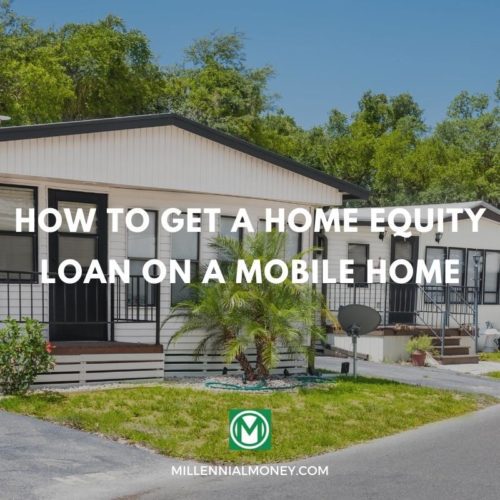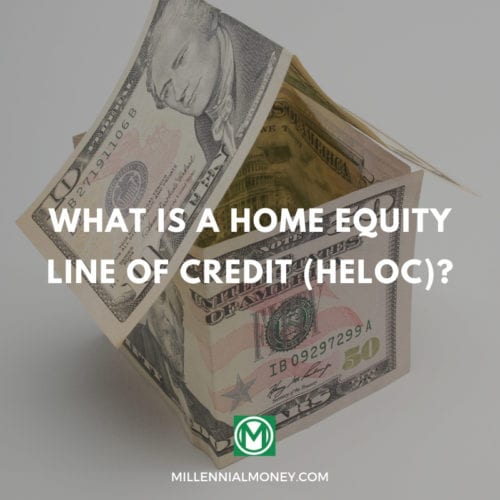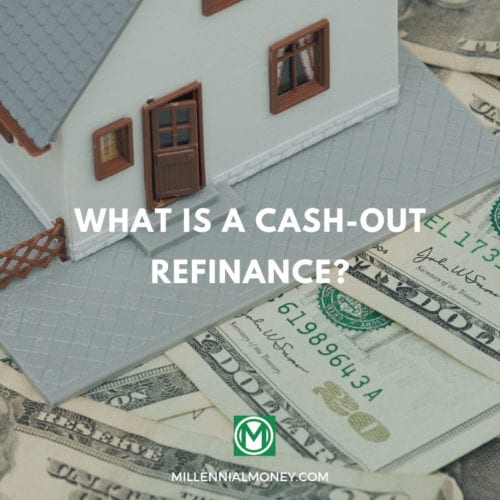One of the biggest hurdles for new home buyers is making the down payment. Given the high cost of living, it’s often difficult to accumulate the many thousands of dollars required to make a down payment on the typical home.
But you may be surprised to learn that there are several down payment options as low as 3%, and there are even some that require no down payment at all.
What is a down payment, how much money should you put down on a house, and is there a way to buy a house with no money down? Let’s do a deep dive and find out.
What is a Down Payment?
A down payment is the upfront cash required to make a major purchase, such as a home. Most mortgage lenders and mortgage programs will require you to make a down payment on a house.
After all, a house is a very large purchase, and the lender wants to know that you’ll have some “skin in the game” as a way of sharing responsibility for the purchase.
You can think of a down payment is something like the deductible on an insurance policy. It’s a form of risk reduction for the insurance company, or for the lender in the case of mortgages. Your down payment means that the financing on the home needed to be provided by the lender will be something less than 100%.
But as we’ll soon see, not all loan programs require a down payment at all. And even some that do can be reworked into zero down payment situations.
What is the Minimum Down Payment for a House?
Different loan programs require various down payment levels, and some require none at all.
The rundown of down payment requirements by the five major types of mortgages are as follows:
- Conventional Loans. The minimum down payment requirement is 5% on owner-occupied properties for most loan types. However, some programs require only 3%. An example is the FNMA HomeReady loan, though it’s designed specifically for lower-income households.
- Jumbo Loans. These are larger loan amounts for higher value properties, that can run into millions of dollars. They’re typically issued by private lenders, like banks, and have higher down payment requirements. You can generally expect a minimum down payment requirement of 20%, though some lenders will go as low as 10% on certain programs or loan amounts.
- FHA Loans. The standard down payment requirement is 3.5%. But that will rise to 10% if your credit score is below 580.
- VA loans. VA loans are famous for 100% financing, resulting in a 0% down payment for eligible active-duty military members and veterans.
- USDA loans. VA loans are restricted to eligible current and former members of the US military. But another 0% down option is USDA loans, which don’t require military affiliation. However, there are income limits and property restrictions for this program. There are also certain areas of the country, mostly urban, where the program is not available. Since they’re insured by the USDA, they do have a rural orientation, though they’re also available in most suburban counties around the country.
Also, be aware that mortgages for both vacation homes and investment properties are available for conventional and Jumbo loans. But the down payment requirements will be higher for each, generally being a minimum of 10% on a vacation home, and at least 20% on an investment property.
Acceptable Sources for Down Payment Funds
When making a down payment, different loan programs have various requirements as to the source of funds.
For example, if you’re buying a home with either a conventional or jumbo mortgage, the lender will generally want to know that your down payment represents your “own funds.” Those are funds that come out of your own bank account and indicate they were accumulated through savings efforts.
But you’re not limited simply to a bank account. You can also liquidate assets from an investment brokerage account, or even take a withdrawal or a secured loan from an employer-sponsored retirement plan. However, they won’t permit funds borrowed from an unsecured source, like a credit line.
You may also be able to get your down payment funds from a gift. The gift must come from a family member, and not from someone who is connected to the purchase transaction – like a real estate agent, seller, or builder. Typically, the entire down payment can come from a gift that is equal to at least 20% of the purchase price. If it’s less, you’ll generally be required to have at least 5% of the purchase price coming out of your own resources.
FHA regulations are more relaxed. They don’t have an own funds requirement, so the entire down payment can come from a gift from a family member. But there are many down payment assistance programs, usually offered by state, county, and municipal governments, that will provide a grant or forgivable loan for the down payment in connection with an FHA mortgage.
And of course, since VA and USDA loans have no down payment requirements at all, the source of funds is not an issue.
How Much Should You Put Down on a House?
Obviously, you’ll need to put at least the minimum down payment required by whatever mortgage program you’re working with. If that’s a conventional mortgage, it will be at least 5%. But with a VA or USDA loan, you won’t need a down payment at all.
But beyond the minimum, there may be times when it will be to your advantage to make the smallest down payment possible, or even to make a larger one.
When Making a Smaller Down Payment is an Advantage
The most obvious advantage favoring a small down payment is when you are a first-time homebuyer, and you’ve had difficulty saving the funds necessary. But there may be other times when making the smallest down payment possible can also work to your advantage:
- When you have plenty of savings, but you want to maintain a large cash cushion after closing. You could make a minimum down payment and keep the rest of the funds in your bank.
- You don’t want to disturb other investments. Perhaps you could make a 20% down payment, but you opt for 5%, so you won’t have to liquidate your investments.
- With record low interest rates on mortgages, you may earn more on your investments than you are paying on your mortgage. In that case, you may want to make a minimum down payment and keep more funds invested.
- You make a minimum down payment on the purchase of a home and use your other funds to pay off high interest credit card debt.
These are just some of the more common reasons that may justify making a smaller down payment. You may have others of a more personal nature.
When Making a Larger Down Payment is an Advantage
Even though a loan program may allow you to make a very small down payment, there may be times when making a larger down payment will be to your advantage.
Some examples include:
- A larger down payment will usually result in a lower interest rate.
- A larger down payment will generally enable you to buy a higher-priced home.
- Perhaps most important of all, a larger down payment will result in a smaller mortgage. That will leave you with a smaller, more affordable monthly payment.
- A larger down payment may enable you to qualify for a mortgage with either less than perfect credit or high debt-to-income ratios. The higher down payment might reduce the overall risk of the loan enough to get your loan approved.
- Avoiding private mortgage insurance (PMI). PMI is required on both conventional and Jumbo mortgage loans anytime you make a down payment of less than 20%. But PMI is expensive. For example, if you have a credit score of 700 and you take a $300,000 mortgage with a 5% down payment, the monthly PMI cost will be $195. But by putting down 20%, that expense will disappear from your house payment.
- If you plan to pay off your mortgage earlier than the stated term, making a larger down payment will make it easier to do.
- A larger down payment will also give you a bigger equity cushion if property values decline in your market area.
- The more equity you have in your home, the easier it will be to refinance your mortgage should that become desirable.
Once again, this is a list of the more common reasons for making a larger down payment. You may have other reasons that apply in your situation.
How to Buy a House with No Money Down
Buying a house with no money down may be easier to do than ever. Not only do both VA and USDA loans require no down payment at all, but FHA, conventional, and Jumbo loans can often be constructed without a down payment as well.
FHA mortgages may be the easiest program to accomplish this with. The standard down payment is 3.5%, but as noted earlier, you can often get down payment assistance from a local government in the form of either a grant or a forgivable second loan. You should check with your lender or your real estate agent to see what down payment assistance programs are available in your area. With a 96.5% first mortgage, and a 3.5% down payment assistance program, you’ll be able to purchase a home with no down payment.
But even if there are no down payment assistance programs in your area, you can still do a no money down purchase using a gift. Once again, since FHA does not have an “own funds” requirement, the entire down payment can come in the form of a gift from a family member or a friend with whom you have a family-type relationship.
But it’s also possible to buy a house with no money down using either conventional or jumbo financing.
In a typical scenario, this will be done with an 80% first mortgage provided by the lender, and a 20% down payment provided by a gift from a family member. Conventional mortgages have no own funds requirement if the gift is at least 20% of the purchase price. The situation is more mixed with Jumbo loans. Some may permit similar gift provisions as conventional loans, while others may still require you to meet an own funds requirement.
Final Thoughts on What is a Down Payment
Now you have everything you need to know about making a down payment on a home purchase. As you can see, how much you’ll need to put down will depend on the loan program you’ll use for the mortgage. But now you know there is also a variety of strategies to enable you to buy a house with no money down, even with FHA, conventional, or jumbo loans.
But if you’re lucky enough to be an eligible veteran, the no down payment scenario will be neatly prepackaged for you in the form of a VA loan. And even if you’re not in the military, you may be able to qualify for a USDA loan with no down payment.
Discuss your options with your mortgage lender during the prequalification or preapproval phase of the loan process. The down payment is always an important part of the mortgage loan application process, and your lender will be able to direct you toward the best program – or combination of programs – to suit your ability on the down payment front.
But whatever you do, don’t assume the absence of funds for a down payment means you can’t buy a home. There are plenty of options to work around the down payment hurdle. You just need to find the one that works best for you.





No comments yet. Add your own